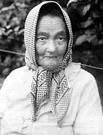How to Use the Database
The database is built around
people’s names as listed in 1851. Quite a lot of people (not least women who
married, but also eg people who wanted more English-sounding names) changed
their names in the course of their lifetimes, sometimes more than once. The
name being used in 1851 is the key here
Many names are not spelled consistently in all sources. The search engine
offers approximating options to help reduce problems with spelling, but it
is important to read the
Notes on Definitions to see how other differences have been treated
You can search by surname, given name, town or ‘any field’. ‘Any field’
allows you to search for any word occurring anywhere in the Database. But it
is slow, and only likely to be useful if other searches have failed and an
unusual word might produce the right hit
Usually, it is best to start your search with a surname. If it is an
uncommon name, you might not need to use the boxes below (eg to add a given
name, or another surname). But with commoner surnames, it is as well to use
one or more of the other boxes to narrow the search
For Surname, Given name and Town searches,
you have a choice of four search types. Phonetically like and Sounds
like use different approaches to finding variants, and can produce
different results. It is well worth trying the other if the first fails.
For Starts with, you must enter the first three letters, none of which
must be a wildcard (? or *). With 'is Exactly', you can use wildcards
anywhere
If you are using the Any Field search, you can use only 'is Exactly'
Further details about the search types can be found
here.
Click on Search the Database, and you will be offered a list of possible
matches. The closest matches to the spelling you entered are shown first,
but otherwise the results are in no particular order. The search results
will display year and place of birth and (where available) parents’ names to
help you make your choice
If you see one that seems to fit the person you are looking for, click on
the ID number in the right-hand column to bring up their details. Clicking
on the links at the bottom of that table will produce sub-tables showing the
person's spouse(s) and child(ren), if any, and addresses and occupation(s)
decade by decade
Make a note of the person's ID number (top-left box). If you are searching
for their entry again, you will be able to use it to find the right entry in
the search results straightaway. It is also useful to quote the ID number in
any correspondence with the Editor






